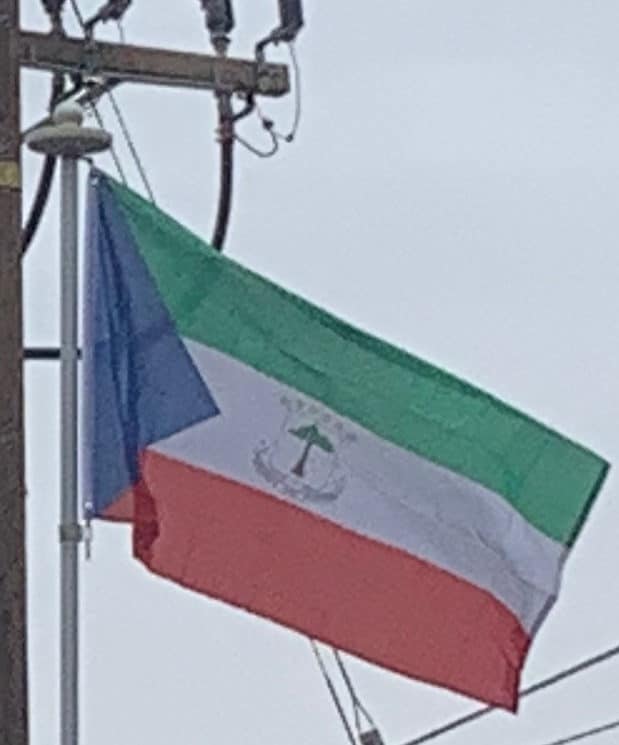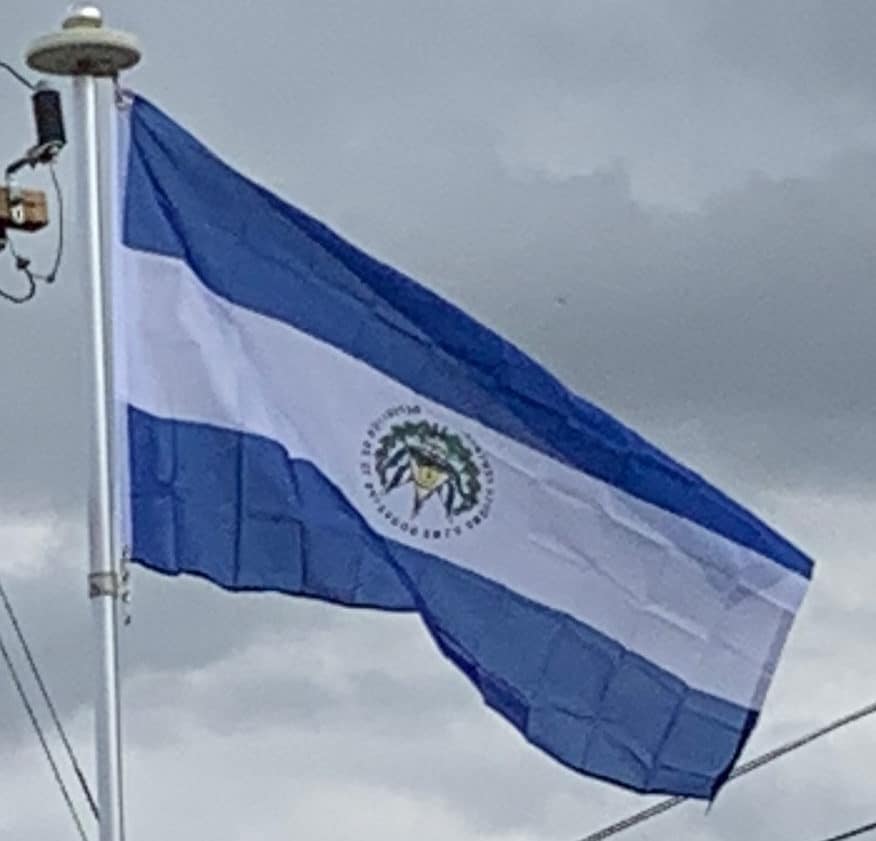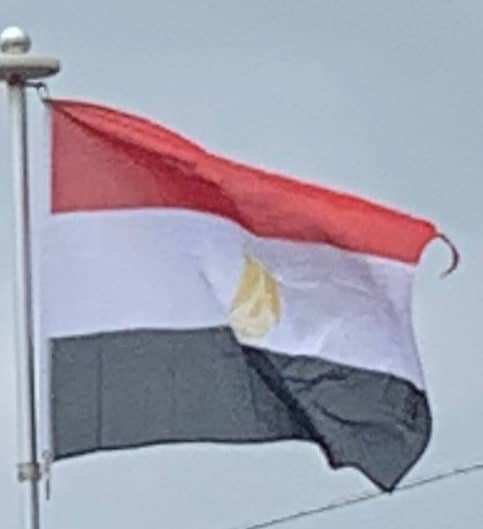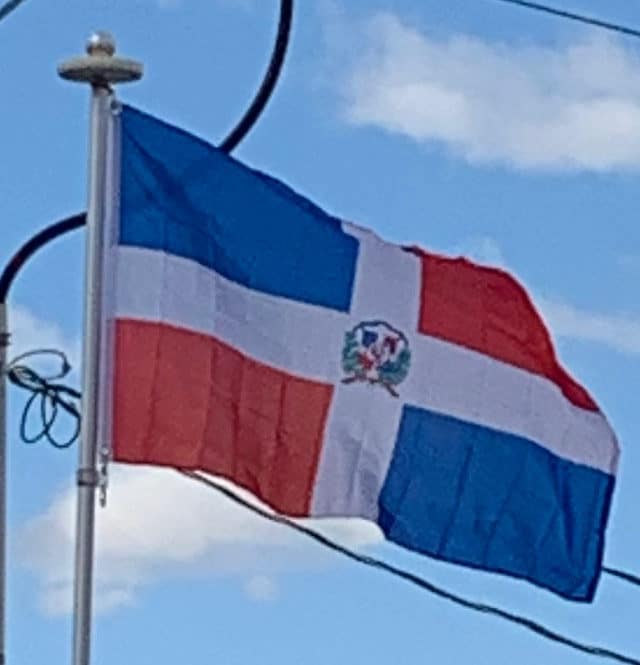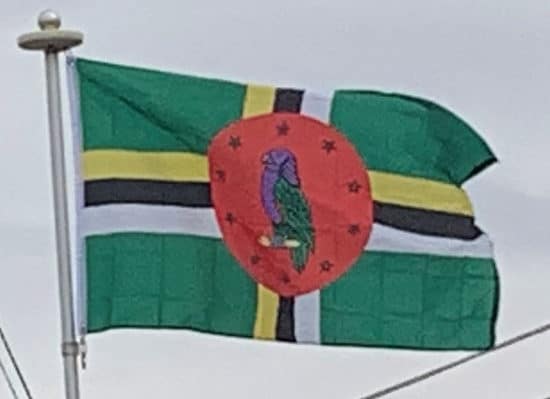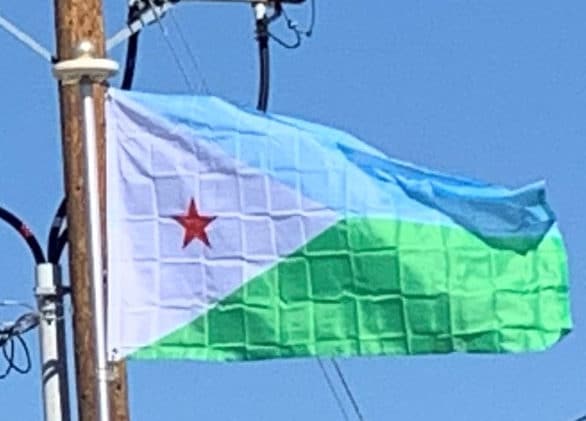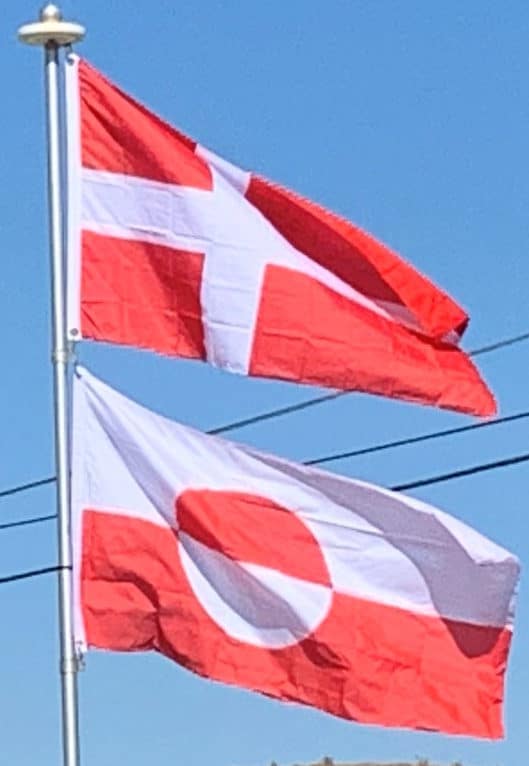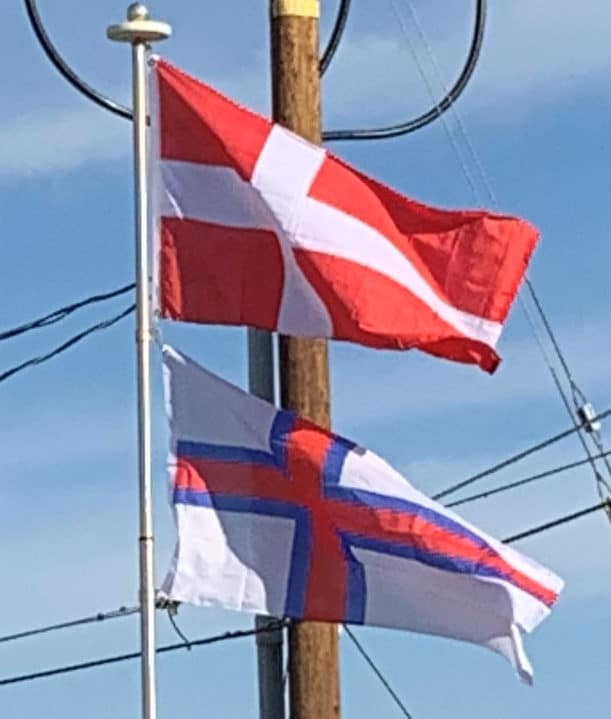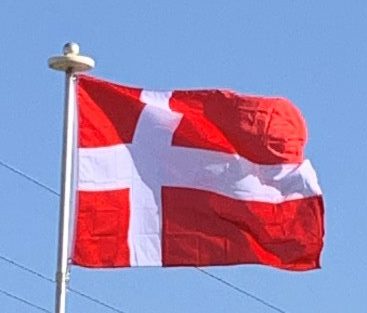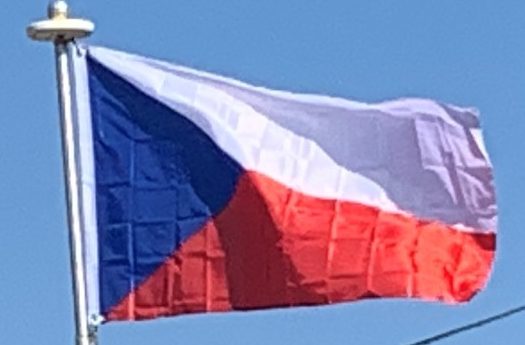Equatorial Guinea
The flag of Equatorial Guinea was adopted on August 21, 1979. The six stars on the map represent the country’s mainland and five islands. Under the rule of dictator Francisco Nguema the flag was modified and a different national emblem was used on it. After he was deposed the original flag was restored.
The flag is a horizontal tricolor, with green, white and red stripes and a blue triangle at the hoist. Green symbolizes the natural resources, agriculture and jungles of the country. Blue symbolizes the sea, which connects the main country with the islands. White symbolizes peace. Red symbolizes the blood shed by the fighters for independence.
